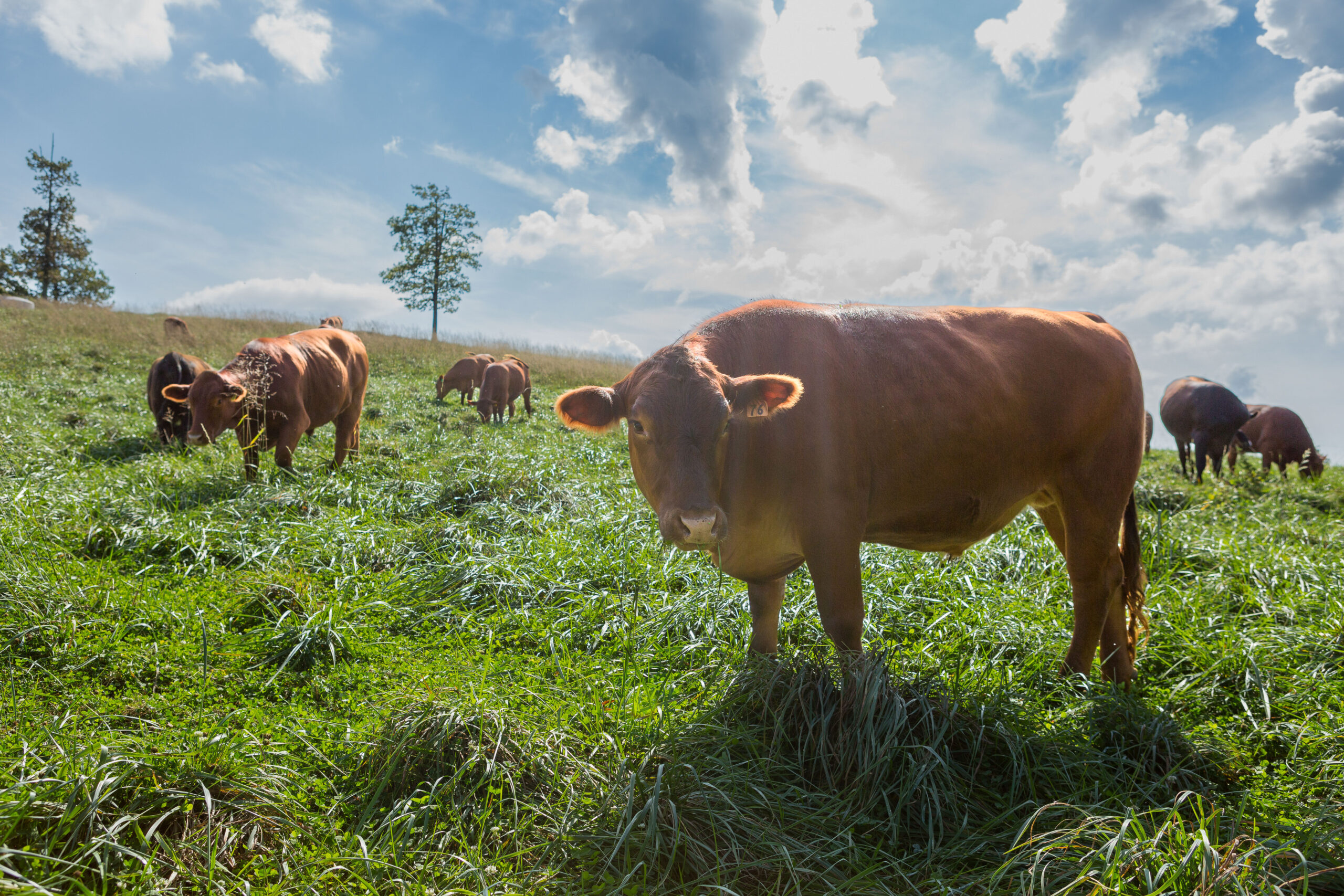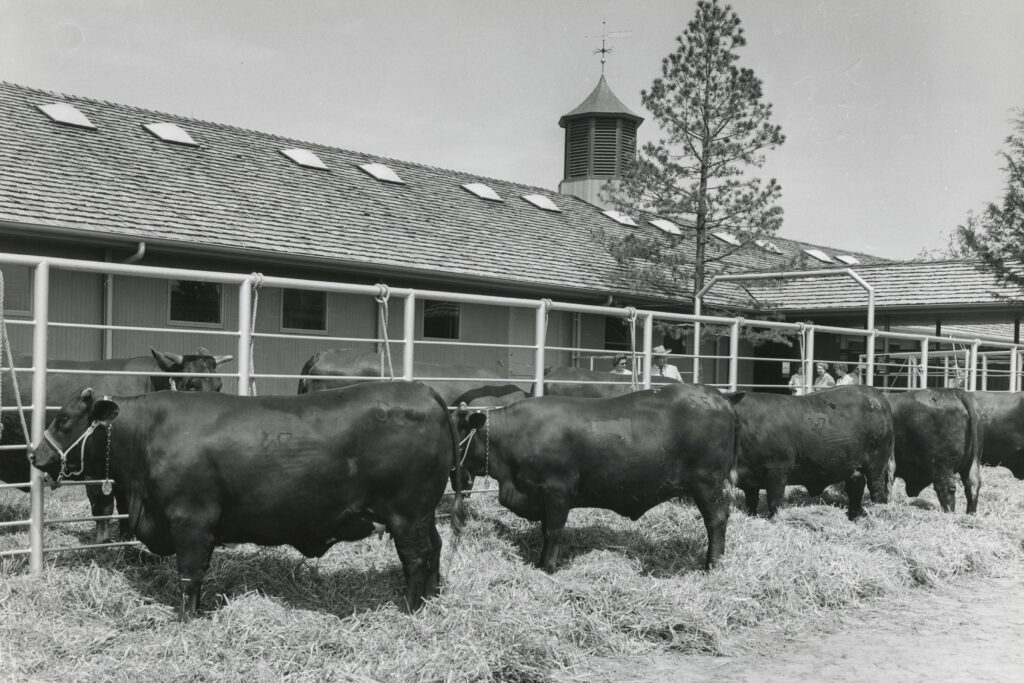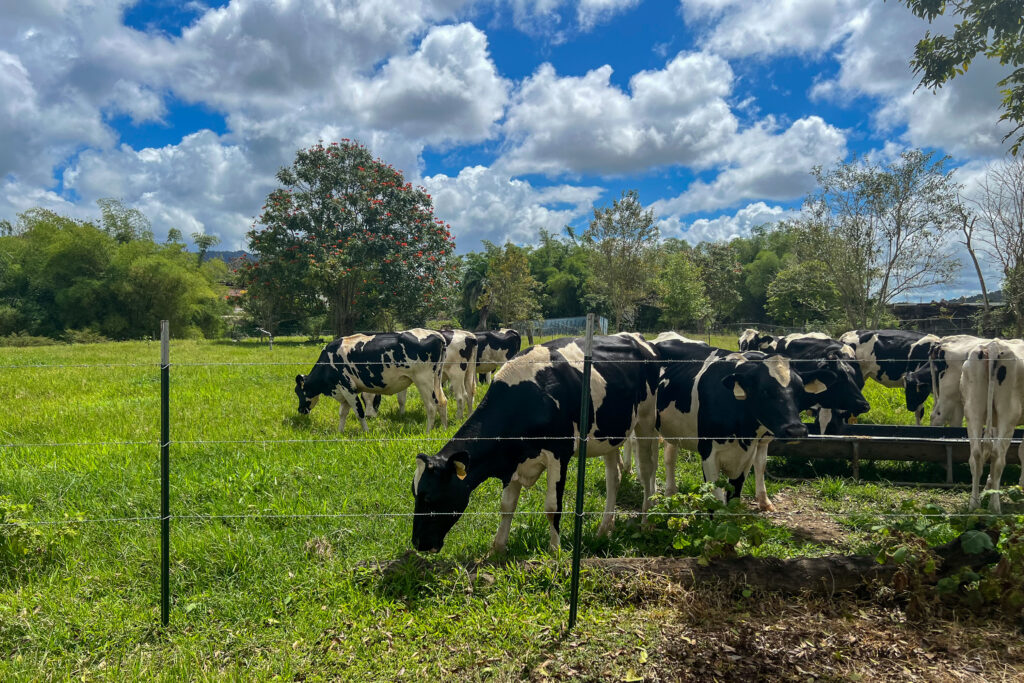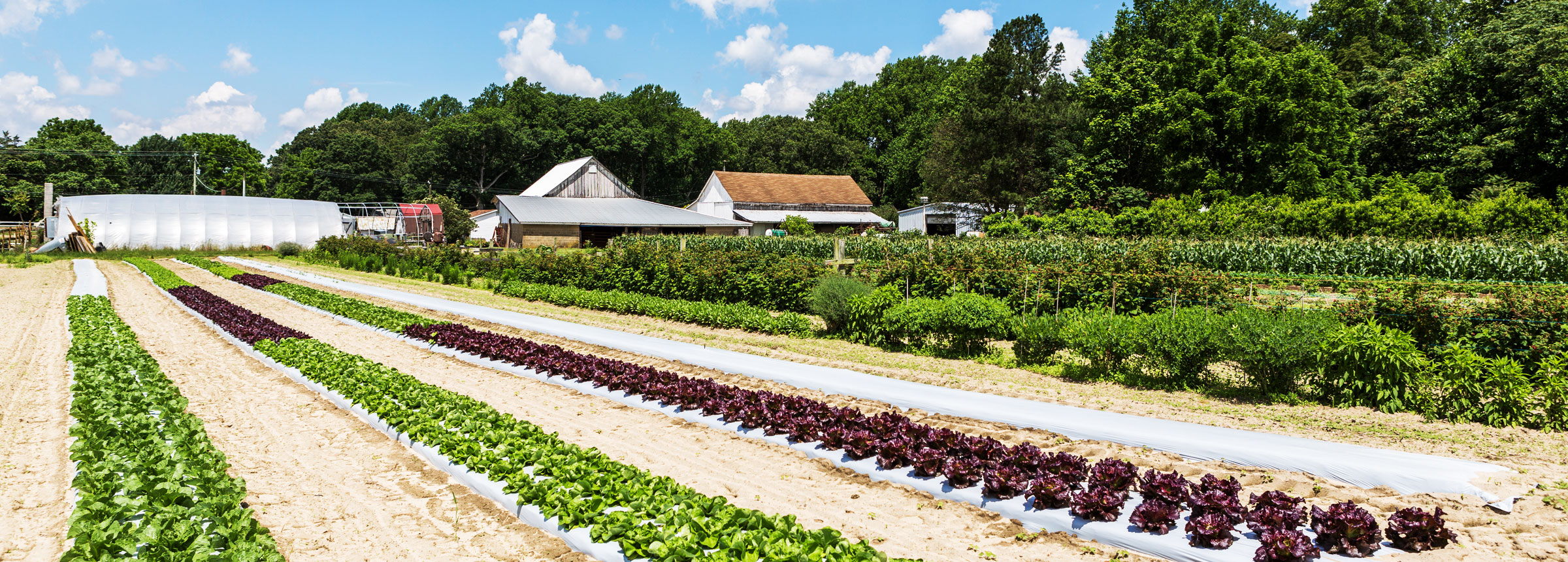
How can regenerative grazing for dairy production provide wins for cows, farmers and climate change?
By Jonathan Winsten
Jon Winsten is an agricultural and environmental economist at Winrock International. Jon works at the interface of agriculture and the environment, focused on climate change and water quality. He pioneered some of the outcome-based incentive mechanisms that help farmers find the most cost-effective strategies to reduce impact on water quality and climate change. He has a life-long background in the dairy sector and has worked on innovative dairy grazing strategies in the U.S., Latin America and Asia.
Winrock International’s roots can be traced to sustainable livestock management when Winthrop Rockefeller established Winrock Farms on Petit Jean Mountain in the Ouachita Mountains of Arkansas in 1953. He began with a herd of Santa Gertrudis cattle. Just over 20 years later, the Winrock International Research and Training Center was founded to continue Winthrop Rockefeller’s economic development work.
Winrock has grown and diversified into a multi-faceted development organization and its varied technical units have joined forces to address some of the world’s most vexing social, agricultural and environmental problems. Climate-smart dairy production is a prime example of a multi-faceted issue that spans the technical breadth of Winrock. At the core of climate-smart dairy production is regenerative grazing, which builds soil health by managing livestock on perennial and annual forages in a way that supports healthy animals, ecosystems, food systems and farm profitability.

Dairy products like milk, cheese and yogurt are important sources of protein, calcium and other macro- and micro-nutrients for people across the globe. Dairy farming is part of the landscape in almost every nation and accounts for nearly 9% of the value of the world’s agricultural production. Winrock has worked on sustainable dairy production for many years in the U.S. and overseas. Regenerative grazing management is an important part of this work.
The benefits of successful climate-smart dairy are many and extend well beyond the farmgate. The increasingly dense vegetative cover that develops over time with regenerative grazing helps to pull carbon from the atmosphere into the soil and also keeps soil and nutrients from impairing the water quality of rivers and lakes. More nutritious forage intake and better heat tolerance result in healthier cows, less incidence of disease and a safer dairy food supply while increasing profitability for dairy farms that can drive economic growth. In many parts of the world, where women manage cows, regenerative grazing and other climate-smart farming practices can improve gender equity by increasing income potential.
In the U.S. — where dairy farming is marching toward mega-farms that keep cows in barns — Winrock has been shining a light on the power of grazing to boost farm profits, protect water quality, and mitigate global climate change. Winrock’s Ecosystem Services unit and the Wallace Center at Winrock International have been joining forces to demonstrate the benefits of regenerative grazing in the U.S. Our recent work indicates that using a low-overhead dairy grazing system can result in profitability four times greater than a traditional U.S. dairy farm. Further, our simulation modeling using the U.S. Department of Agriculture’s Integrated Farm Systems Model shows the reduction of nitrogen and phosphorus loss from fields (nutrients that can cause water quality problems in lakes and streams) are 62% and 71% less, respectively, from the low-overhead dairy grazing system. The carbon footprint of the milk produced was 5% less.
In tropical regions, the potential to reduce milk’s carbon footprint is much greater than in the U.S. The primary GHG concern with dairy production is the enteric methane emissions (released primarily from cow burps.) Improved forage digestibility, which comes with better grazing management, reduces enteric methane emissions. Unlike the U.S., where cows are fed high quality forages and lots of grains, in tropical regions, dairy cattle either graze or are fed forages that tend to be over-mature. This results in a reduced digestibility of the feed which limits milk production and, in turn, produces more enteric methane. By helping farmers to implement regenerative grazing practices, Winrock is helping to boost productivity and farm profits, while greatly reducing GHG emissions.

Winrock’s Ecosystem Services unit is currently working with researchers and stakeholders in Puerto Rico to educate and train farmers on climate-smart dairy production. At the center of this work is improving forage digestibility through regenerative grazing, which can boost milk production per cow by 40 to 65%. Increased milk output and reduced methane emissions will substantially reduce the carbon footprint (net GHG emissions per unit of milk production) of Puerto Rico’s largest agricultural sector (which is dairy, surprisingly).
The other two important facets of our climate-smart dairy work are improving the heat tolerance of dairy cattle and on-farm generation and storage of solar power. Dairy cows perform better in milder temperatures, but as global climate change increases the average temperatures in many regions and the challenge for tropical dairy production becomes greater.
We are working with researchers at the University of Puerto Rico at Mayaguez who use breeding to improve the heat tolerance of dairy cattle. The result is not only improved grazing vigor and milk production but also improved reproductive performance that boosts the lifetime milk production of the cow and adds economic value from more offspring.
Dairy cows need to be milked every day (most often twice per day). In many tropical regions, including Puerto Rico, the electrical grid is not always dependable, so the use of diesel generators is ubiquitous on dairy farms, adding to production costs and GHG emissions. The abundant sunshine in the tropics makes solar power an obvious alternative energy choice to GHG-emitting diesel generators for dairy farms, but adoption remains sluggish. An important challenge is cost-effective energy storage, as well as supporting farmers in adopting innovative applications such as solar-powered milk cooling.
Winrock’s Ecosystem Services unit has deep experience with quantifying the financial and environmental impacts of regenerative grazing. The Wallace Center’s Pasture Project is a leading proponent of regenerative grazing in the U.S. Winrock’s Agriculture, Resilience & Water unit is strengthening agricultural supply chains and facilitating economic growth worldwide. Our Clean Energy & Environment unit has pioneered solar-powered electric fencing and milk cooling in Africa.
Helping farmers move toward climate-smart dairy production in the U.S. and around the world is a challenge uniquely suited to Winrock’s multiple facets and honors our namesake, Winthrop Rockefeller, and his legacy of sustainable livestock production.
Related Projects

